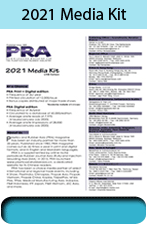Global bioplastics sector to grow by 36%; Asia remains as production hub
The global bioplastics industry is predicted to grow by 36% over the next five years, having weathered the challenges posed by the Covid-19 pandemic. And the outlook for bioplastics is also promising as the global market is, according to François de Bie, Chairman of European Bioplastics, speaking at the recent 15th EUBP Conference.
The global bioplastics production capacity is set to increase from around 2.1 million tonnes in 2020 to 2.8 million tonnes in 2025. Innovative biopolymers, such as bio-based PP and especially PHAs (polyhydroxyalkanoates) continue to drive this growth. Since PHAs entered the market, the share of this important polymer family continued to grow. Production capacities are set to increase successfully almost sevenfold in the next five years.

The production of polylactic acid (PLA) will also continue to grow due to new investments in PLA production sites in China, the US, and in Europe. Currently, biodegradable plastics account for almost 60% of the global bioplastics production capacities. PHA and PLA are bio-based, biodegradable, and feature a wide array of physical and mechanical properties.
Production capacities of biobased PP are set to more than triple by 2025. This is due to the widespread application of PP in a wide range of sectors. PP is a very versatile material that features excellent barrier properties and is one of the most widespread commodity plastics. A biobased version of this olefin has been awaited for many years.
Biobased, non-biodegradable plastics, including the drop-in solutions biobased PE and biobased PET, as well as biobased PA (polyamides), currently make up for 40% (0.8 million tonnes) of the global bioplastics production capacities.
For biobased PE new capacities are planned to come on-line in Europe and South America over the coming years. In contrast, biobased PET will contribute only a small share to the overall capacities. Intentions to increase production capacities have not been realised at nearly the rate predicted in previous years. Instead, the focus has shifted to the development of PEF (polyethylene furanoate), a new polymer that is expected to enter the market in 2023. PEF is comparable to PET but is fully biobased and furthermore features superior barrier properties, making it an ideal material for beverage bottles.
Packaging remains the largest field of application for bioplastics with almost 47% (0.99 million tonnes) of the total bioplastics market in 2020. The data also confirms that bioplastics materials are already being used in many other sectors, and the portfolio of application continues to diversify. Segments, such as consumer goods or agriculture and horticulture products, continue to increase their relative share.
With a view to regional capacity development, Asia remains a major production hub with over 46% of bioplastics currently being produced there. Presently, one fourth of the production capacity is located in Europe. This share is predicted to grow to up to 28% by 2025.
“Recently, significant investments have been announced by our industry, also in the heart of the European Union. Europe is set to become a key producer of bioplastics. The material will play an important role in achieving a circular economy. The ‘local for local’ production will accelerate the adoption of bioplastics in the European market”, says Hasso von Pogrell, Managing Director of European Bioplastics.
The land used to grow the renewable feedstock for the production of bioplastics is estimated to be 0.7 million ha in 2020 and continues to account for 0.015% of the global agricultural area of 4.7 billion ha. Despite the market growth predicted in the next five years, the land use share for bioplastics will only slightly increase to 0.02%.
The market data update 2020 has been compiled in cooperation with the nova-Institute (Hürth, Germany). The data for the global production capacities of bioplastics is based on the market study “Bio-based Building Blocks and Polymers” by nova-Institute (2020). For more information on the study and full market data report, please go to www.bio-based.eu/markets.
(PRA)
Subscribe to Get the Latest Updates from PRA Please click here
©2020 Plastics and Rubber Asia. All rights reserved.

©2020 Plastics and Rubber Asia. All rights reserved.
Home Terms & Conditions Privacy Policy Webmail Site Map About Us














